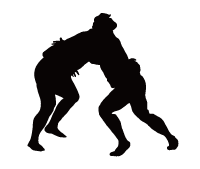
When the Russian former sumo wrestler Wakanohou Toshinori was arrested for marijuana, then subsequently released pending disposition, he immediately held a press conference. In that press conference, (September 8, 2008), he simply apologized, but in his latest press conference (September 29), he criticized the Japan Sumo Association. Even so, it seems he wants to return to sumo. He had no lawyer with him at this second conference, and it is being called a private rant.
Having no inside information on the sumo world, I don’t completely understand the situation. However, from my layman’s perspective, it seems that having obtained at great pains a “sumo wrestler” character, he has reverted to a “foreigner” character; that is, he has gone from being “Wakanohou” back to “Mr. Soslan Aleksandrovich Gagloev.” This is reflected by the fact that he went from using polite Japanese when answering the journalists’ questions to using plain Japanese.
Even at his first press conference, he used some plain Japanese. For example, there was his use of “ikkai mo inakatta” (didn’t exist once) in his statement: “Ootakebeya, Rohou no heya wa, nankaimo itta koto arimasu. Demo, nioi, mo, marifuana mo kanji, marifuana no hanashi mo, ikkai mo inakatta” (roughly translated: I have been to Otake Stable, Rohou’s stable, many times. But, I didn’t once notice the smell of marijuana, feel marijuana [was being used], nor talked about marijuana with anyone there). Or his use of “imeeji tsuketa” (give a [bad] image) when he said: “Jibun, warui koto shite, Hakurozan-zeki ni Rohou-zeki ni, jibun no i, ime-ji tsuketa. Sore de, Rohou-zeki, Hakurozan-zeki suimasen deshita ” (Because of the bad things I’ve done I have given my own [bad] image to Roho-zeki and Hakurozan-zeki(1); to Rohou-zeki and Hakurozan-zeki , I wish to say I am sorry.).
However, these slips were covered by his use of polite expressions, such as “itta koto arimasu” (…have gone to…) and “suimasen deshita” (I am sorry), and overall, one cannot say his speech didn’t leave a good impression; he gave the impression of a foreigner sincerely struggling with the unfamiliar Japanese language. In this second conference, he used entirely plain, and no polite, Japanese, as exemplified in his statement, “kyou wa kore yori kuwashiku hanashitaku, hanasanai yo” (I don’t want to speak in more detail today). In particular, the use of “yo” at the end of “hanasanai yo” left a bad taste.
Even worse, in this conference he used a lot of his native Russian, all of which was broadcast. From Takamiyama-zeki(2) on, the cardinal rule of foreign sumo wrestlers in Japan has been to “use Japanese, no matter how poorly, when in front of the camera.” In this respect, Wakanohou has gone from being a “sumo wrestler” to a “foreigner.”
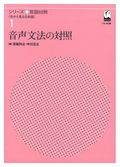 However, in Onsei Bunpou no Taishou(3) , a collection of essays I compiled with Masayuki Nakagawa, there is one essay titled “Acquiring Character from Spoken Delivery in Foreign Languages: Analysis of Interviews with Foreign Sumo Wrestlers” written by Ryoko Hayashi. Although the essay explains it in more detail, the gist is that the “sumo wrestler” character is strong gentle, and speaks awkwardly and quietly. So when an interviewer asks, “How was that match?” the wrestler should respond with something like “Hmm… Well, I just gave it my all.” Foreign wrestlers probably first intensively study this “sumo wrestler” Japanese, and thus are good at such responses.
However, in Onsei Bunpou no Taishou(3) , a collection of essays I compiled with Masayuki Nakagawa, there is one essay titled “Acquiring Character from Spoken Delivery in Foreign Languages: Analysis of Interviews with Foreign Sumo Wrestlers” written by Ryoko Hayashi. Although the essay explains it in more detail, the gist is that the “sumo wrestler” character is strong gentle, and speaks awkwardly and quietly. So when an interviewer asks, “How was that match?” the wrestler should respond with something like “Hmm… Well, I just gave it my all.” Foreign wrestlers probably first intensively study this “sumo wrestler” Japanese, and thus are good at such responses.
On the other hand, they do not study Japanese that is uncharacteristic of sumo wrestlers, for example language with which they can protest their own innocence while criticizing others (“my boss and other wrestlers were smoking marijuana too, but they haven’t been punished,” or “the fights were fixed” etc.). This is why expressions that do not leave a good impression, such as “hanasanai yo” slipped out. Considering this, Wakanohou probably had no choice but to use Russian at this press conference.
However, if Aleksandrovich makes a big splash with his “foreigner who has lost his sumo wrestler identity” character, I as a character watcher can only be embarrassed at my own obscurity.
* * *





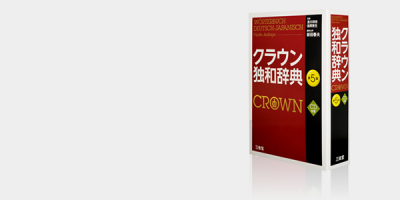
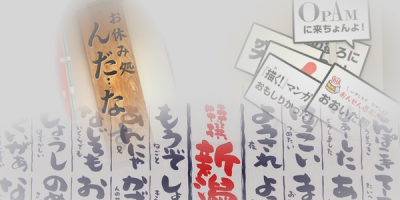
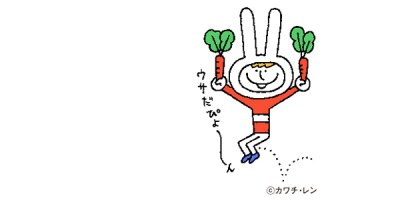
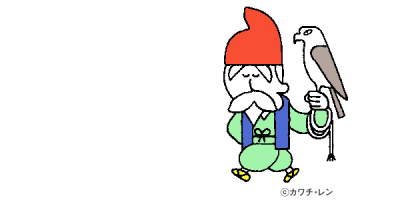
(1) Rohou (Soslan Feliksovich Boradzov) and Hakurozan (Batraz Feliksovich Boradzov) were both sumo wrestlers in Japan. They were expelled from the sport after failing drug tests in 2008.
(2) Takamiyama (Jesse James Wailani Kuhaulua) is a now-retired Hawaiian-born sumo wrestler. He became a naturalized Japanese citizen in 1980.
(3) SADANOBU Toshiyuki and NAKAGAWA Masayuki (eds.), Onsei Bunpou no Taishou (Comparisons of Spoken Grammar). Kurosio , 2007